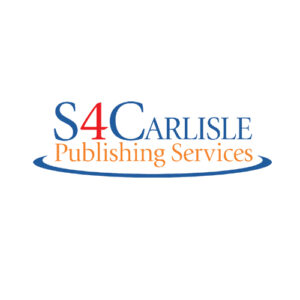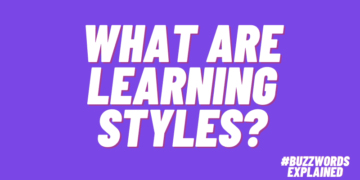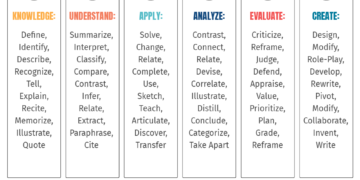GPT-3 And Its Role In Shaping The Future Of eLearning
eLearning, as an industry, is one that serves as a testing place for a lot of important tech trends. On par with the computer/video gaming industry, which incorporates different tech solutions like Augmented Reality (AR), Virtual Reality (VR), and simulated worlds, the eLearning industry also encourages the use of technology that makes the learning experience engaging and immersive. In the light of this, one should consider the growth of an emerging technology known as GPT-3. This stands for third generation Generative Pre-trained Transformer.
GPT-3 is a part of the OpenAI project. The whole project received a lot of press when the English newspaper The Guardian published an article purportedly written by GPT-3 [1]. Before getting alarmed, what needs to be understood is that the software actually wrote eight different essays, and the editorial team joined the different paragraphs together to form a full-length article. One can read about this in detail here. This article will attempt to demystify the OpenAI project, understand GPT-3, examine some of the other AI-powered content-creation tools in the market, and look at the implications of such software for the eLearning industry as a whole.
The OpenAI Project
OpenAI is a company that is funded by many leading investors, including Microsoft and Khosla Ventures. The “Charter” statement listed on the OpenAI website provides an interesting insight into how the company intends to use its research into Artificial Intelligence to build APIs and solutions that can help different organizations add automation effectively to their workflows [2]. GPT-3 is one of the most interesting outcomes of the work being done at OpenAI.
What Is GPT-3?
GPT-3 is a language prediction model and a natural language processing system. The quality of the output of the GPT-3 system is so high that it is difficult to actually predict if it is written by a human or an AI program. It actually reminds us of one of Isaac Asimov’s short stories, where a robot belonging to a novelist writes a short story that is much more interesting than any of the novelist’s works. This alarms the novelist to a great extent and he reprograms the robot to ensure that it does not write any more stories. Though Asimov wrote this as science fiction, the speed at which AI tech is progressing really makes one wonder where fiction ends and reality begins.
In September 2020, Microsoft announced that it had licensed “exclusive use” of GPT-3’s underlying model, though other companies and organizations could continue to use the APIs. The following list of applications using GPT-3 is limited but makes for interesting reading:
- GPT-3, specifically the Codex model, is the basis for GitHub Copilot, a code completion and generation software that can be used in various code editors and IDEs.
- GPT-3 is used in certain Microsoft products to translate conventional language into formal computer code.
- GPT-3 has been used by Andrew Mayne for AI Writer, which allows people to correspond with historical figures via email.
- GPT-3 has been used by Jason Rohrer in a retro-themed chatbot project named “Project December”, which is accessible online and allows users to converse with several AIs using GPT-3 technology.
- GPT-3 was used in AI Dungeon, which generates text-based adventure games. Later it was replaced by a competing model, after OpenAI changed their policy regarding generated content.
Please read the Wikipedia page for GPT-3 that offers detailed insights on what GPT-3 can do [3].
GPT-3 And Its Relevance To The eLearning Industry
The crux of eLearning design depends on two crucial factors:
Content is handled by qualified Instructional Designers and technical writers who build detailed storyboards with the relevant content and image/animation references and instructions for the graphic designers to build the eLearning course. This is a long process with detailed reviews taking place at different stages of content creation, graphic design, and quality checks for the final course. Time and resource-intensive, it truly takes a fair amount of time to come up with a good, thoughtfully designed, and engaging digital learning solution.
Now just for a moment, imagine a hypothetical scenario. You have an AI program installed on your computer. You feed in broad instructions into the program, in terms of what kind of training content you want, define the target audience and learning outcomes, and suggest some visuals or animations that you would like to feature in it. The AI-powered program now comes up with a proper storyboard with all the relevant content and instructions for animation. Your senior Instructional Designers go through the machine-generated storyboard, make requisite changes, and forward it to the graphic design team for development. The graphic design team then gives life to the storyboard and creates a proper full-fledged eLearning course.
Isn’t this fascinating? Look at the amount of time and effort that the company saves. This is just one of the hypothetical applications of GPT-3 in eLearning. DALL.E is another interesting innovation from OpenAI. It is a new AI system that can create realistic images and art from a description in natural language. Just imagine how GPT-3 and DALL.E can be utilized together to build powerful eLearning storyboards, which can then be converted into a digital learning solution using rapid course authoring tools. The possibilities are truly infinite.
Popular AI-Based Content Creation Tools
Jasper, Frase, ShortlyAI, and Copysmith are just a few AI-powered content tools available in the market. Jasper is highly rated by its users and is one of the most popular AI-based content generation tools in the market. The tool focuses on marketing copy and helps marketers create copy for display advertising and simple newsletters. Frase is a tool that is used to generate longer articles and blogs and requires users to provide a listicle-based title, and the tool then generates content relevant to the topic [4]. Read this article to learn more about such AI-based content generation tools.
References:
[1] A robot wrote this entire article. Are you scared yet, human?
[2] OpenAI Charter
[3] GPT-3
[4] AI Content Generator
[5] DALL·E 2

S4Carlisle Publishing Services
Our solutions and services encompass learning strategy consulting, digital learning experience design, eLearning courseware, learning technology, platform services, product engineering, and learning analytics.




















